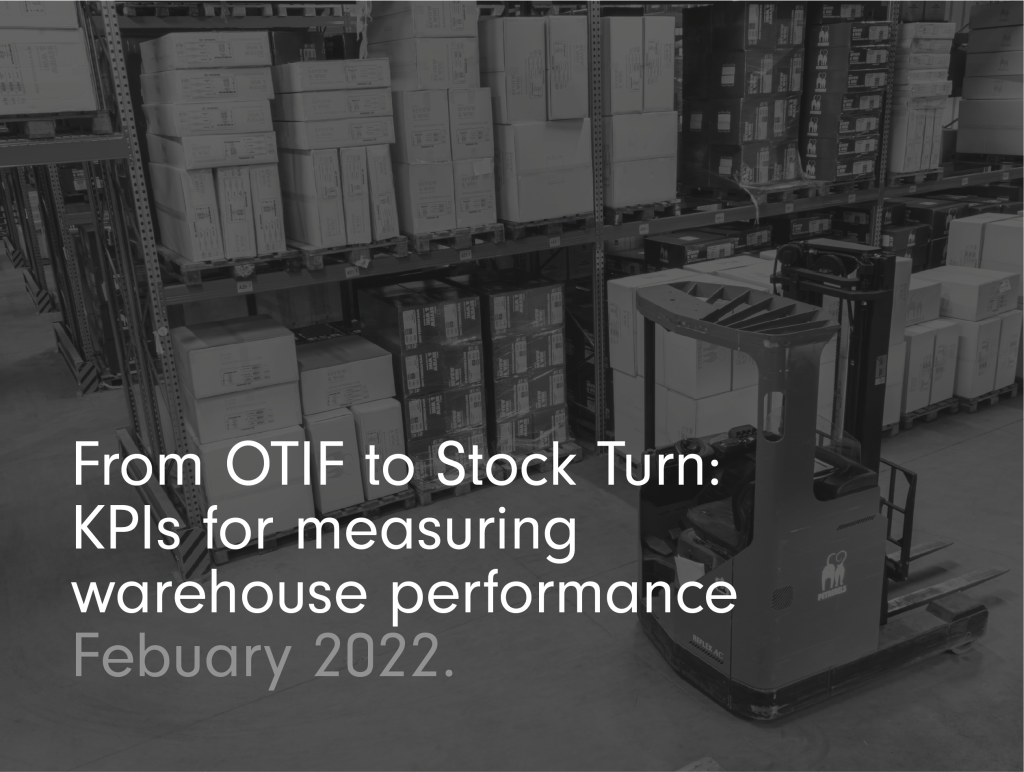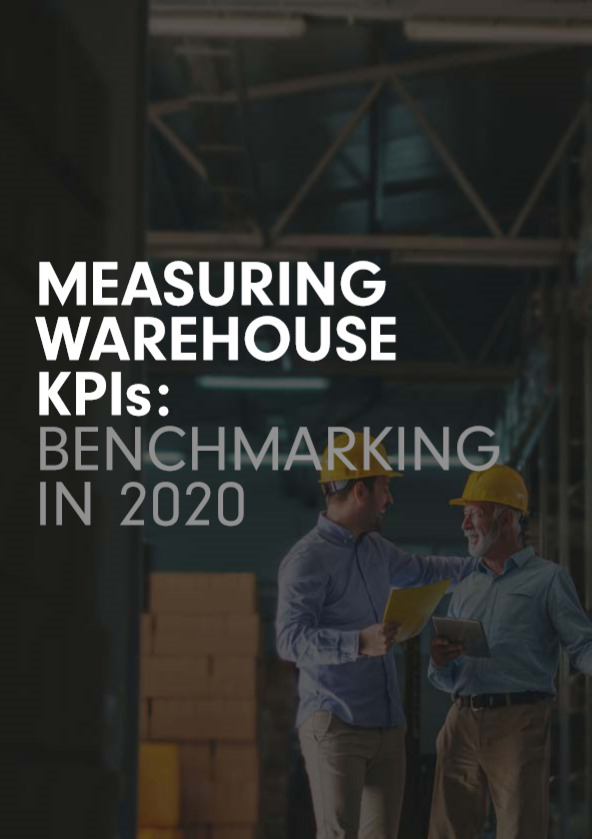From OTIF to Stock Turn: KPIs for measuring warehouse performance.

Whether your goal is to maximize product flow, improve receipt and putaway processes, or build an efficient picking system, it’s important to measure your business’s performance. This helps you find areas for improvement.
Efficient warehouse operations are crucial for any business that relies on storage and distribution. Tracking Key Performance Indicators (KPIs) helps warehouse managers and supply chain professionals monitor performance. It also helps them identify areas that need improvement. What exactly are warehouse KPIs, and how can you use them to boost efficiency?
What are KPIs?
KPIs (Key Performance Indicators) are measurable values that show how effectively a business achieves its goals. For a warehouse, KPIs focus on various aspects of operations, including inventory management, order accuracy, and space utilisation. These metrics provide clear insights into the health and efficiency of your warehouse and can guide decision-making.
For example, tracking receiving cycle time can tell you how quickly goods move from the receiving dock to storage. Meanwhile, metrics like order cycle time can pinpoint delays in your customer order processes.

How can you identify your KPIs?
Not all KPIs are relevant to every warehouse. To choose the right ones, start by asking yourself a few key questions:
- What are my main goals? For example, are you focused on faster deliveries, reducing carrying costs, or improving order accuracy?
- Where are the bottlenecks? Find areas of waste, like slow picking or unused storage space.
- What does success look like? Define measurable targets—like achieving 95% picking accuracy or reducing order cycle time by 10%.
The right KPIs depend on the size of your warehouse, the type of products you store, and the needs of your customers.
Importance of Warehouse Key Performance Indicators
KPIs are important because they provide concrete metrics for measuring your warehouse’s performance. They allow you to identify areas of improvement, such as receiving efficiency and carrying cost of inventory, and make data-driven decisions to optimize operations.
Identifying the right KPIs is important. These can include the inventory to sales ratio and the total time for tasks like pick and pack. This helps you set realistic goals and track your progress. This not only improves efficiency in the short-term but also allows for long-term growth and success.
In addition, having clearly defined KPIs, such as total number of orders and order lead time, can help with employee motivation and accountability.
When everyone is aware of what is being measured and their role in achieving these targets, it can lead to a more productive and goal-oriented workforce.
Examples of Warehouse Key Performance Indicators
1. Order Accuracy: This measures the percentage of orders picked correctly without any errors or discrepancies.
2. Inventory Turnover: This tracks how quickly inventory is sold and replenished, indicating the efficiency of stock management.
3. On-time Delivery: This measures the percentage of orders delivered on or before the promised delivery date.
How to Use KPIs Successfully
The key to making KPIs work for your warehouse is to track them consistently and act on the insights they provide. Here’s how to do it:
1. Set Clear Benchmarks
Compare your performance against industry standards or internal goals. For example, if the average receipt accuracy rate for your industry is 95%, aim to match or exceed that.
2. Use Technology
Implement warehouse management systems (WMS) to automate data tracking. Tools like barcode scanners and inventory management software can help you monitor metrics like inventory levels and picking process efficiency.
3. Analyse and Adapt
Regularly review your data to spot trends and adjust your operations. For instance, if you notice a high rate of returns, investigate the cause and fix it.
Now, let’s dive into some specific KPIs you can track to improve warehouse performance.
Receipt accuracy
Receipt accuracy checks if the goods received match what was ordered. It is a key measure for supply chain efficiency. This helps find mistakes in the process and keeps inventory levels accurate, which is important for smooth operations.
Formula:
(Accurate Receipts ÷ Total Receipts) × 100
Achieving high receipt accuracy means your stock records are reliable. This minimizes discrepancies and reduces delays in fulfilling orders. This accuracy helps maintain customer satisfaction and streamlines inventory management.
Receipt performance.

This KPI measures the efficiency of moving new stock from delivery to storage, known as the receiving cycle time. Reducing the time it takes to receive goods can make warehouses more efficient. This means items spend less time sitting around, which improves the flow of operations.
Key Benefits:
- Reduces delays in restocking, ensuring that shelves are replenished quickly and efficiently.
- Increases the speed at which orders become available for picking and shipping, leading to faster fulfillment and improved customer satisfaction.
- Enhances inventory management by streamlining the flow of goods, minimizing bottlenecks, and optimizing warehouse space utilization.
On time in full (OTIF).

OTIF, or On Time In Full, measures how often customer orders are delivered both on time and completely as requested. This metric is crucial because it reflects the efficiency of the supply chain and customer satisfaction levels. A high OTIF score indicates a reliable supply chain, while a low score may suggest issues that need attention.
Formula:
(Orders Delivered On Time and Complete ÷ Total Orders) × 100
By tracking OTIF, businesses can pinpoint problems such as delays in lead times, inventory shortages, or other supply chain disruptions. Addressing these issues can lead to improved service levels and increased customer loyalty. Regular monitoring of OTIF can help maintain smooth operations and enhance overall business performance.
Pick performance.

The picking process is one of the most labor-intensive tasks in a warehouse. It involves selecting and retrieving items to fulfill orders accurately and efficiently. Pick performance measures how quickly and accurately these items are picked. This directly impacts warehouse efficiency and customer satisfaction.
Formula for Pick Accuracy:
(Total Accurate Picks ÷ Total Picks) × 100
Improving picking accuracy is crucial. It reduces the number of returns caused by errors. It also boosts customer satisfaction by ensuring orders are correct upon delivery.
Cycle count accuracy.

Cycle counting is a method of regularly checking inventory to ensure that recorded figures align with actual physical stock. This KPI is crucial as it reflects the accuracy and effectiveness of your inventory management systems.
Key Benefits:
- Avoids costly inventory discrepancies: By regularly verifying inventory, you can catch and correct errors before they lead to significant financial losses or operational issues.
- Reduces stockouts: Accurate inventory records help ensure that products are available when customers need them, reducing the risk of stockouts and missed sales opportunities.
A high cycle count accuracy rate means your warehouse runs efficiently. It can quickly respond to customer demands. This helps minimize carrying costs by preventing overstocking and understocking.
Space Utilisation

Maximizing storage space is crucial for an efficient warehouse operation. Space utilization is a key metric that evaluates how effectively the available storage area is used. It is calculated using the formula:
Formula:
(Used Space ÷ Total Space) × 100
This percentage shows how much of your warehouse storage is full. Improve space utilization to increase inventory capacity. This allows you to store more stock without expanding your warehouse. Efficient use of space not only optimizes operations but also helps reduce costs associated with warehouse expansion.
Stock turn.

Stock turn, also known as inventory turnover, measures how frequently inventory is sold and replenished over a certain period. A higher turnover rate indicates efficient inventory management, while a lower rate may suggest overstocking or slow sales.
Formula:
Cost of Goods Sold ÷ Average Inventory Value
By analyzing this KPI, businesses can spot slow-moving products. This information helps with decisions on purchasing, sales strategies, and inventory management. It ensures stock levels are optimal and reduces carrying costs.
Conclusion
Tracking warehouse KPIs is essential to improving efficiency, reducing costs, and satisfying customers. From receipt accuracy to stock turn, each KPI gives valuable insights into your operations. Using tools like warehouse management systems and analyzing performance regularly can help you stay competitive and address problems.
Start small: Pick a few KPIs most relevant to your operation. Measure them consistently, and watch as your warehouse becomes a well-oiled machine.
Frequently Asked Questions
Start with receipt accuracy or picking accuracy. These metrics are easy to track and directly impact your operations.
Streamline your picking process and ensure inventory records are accurate to prevent delays when processing orders.
Review your KPIs at least monthly to spot trends and make timely adjustments.
Efficient space management allows you to store more products without needing additional warehouses, reducing costs.
Absolutely. Tools like inventory management software, barcode scanners, and warehouse management systems help track metrics automatically and produce actionable insights.


